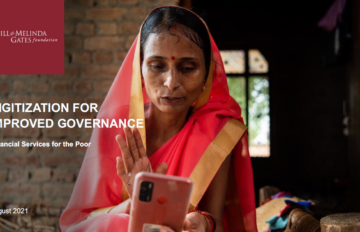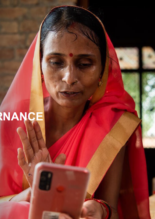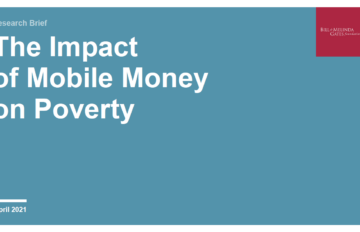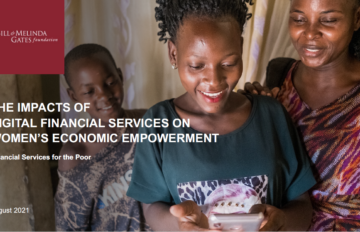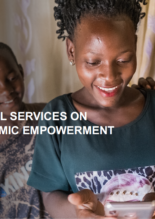Explainer: What is digital public infrastructure?
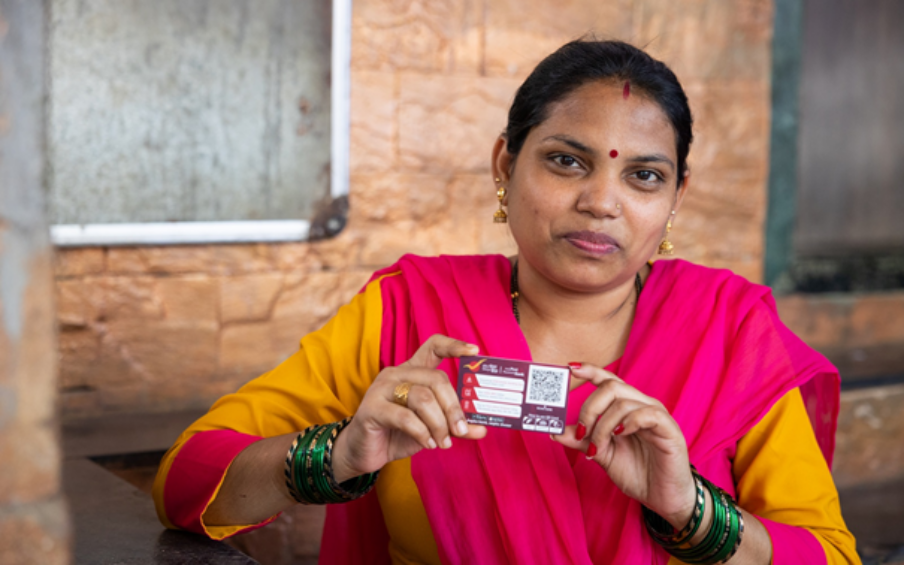
This article was originally published by the Gates Foundation on August 16th, 2023.
When the COVID-19 pandemic struck, governments around the world rushed to send emergency payments to their people as lockdowns ground their economies to a halt. Some countries dispensed funds to millions of people within weeks. Others took months, sent money to the wrong people, or excluded qualified recipients. How quickly people received money depended largely on whether they lived in a country with a strong digital public infrastructure, or DPI.
DPI can be a game changer for any country, but especially low- and middle-income countries, where it can help accelerate economic growth by an estimated 20% to 33%. Our foundation funds projects to advance DPI because it creates opportunities that help people thrive—across sectors such as health care, agriculture, and financial inclusion—while enabling women’s economic power.
Here’s what you need to know about DPI and why it’s important.
What is digital public infrastructure (DPI)?
DPI is a digital network that enables countries to safely and efficiently deliver economic opportunities and social services to all residents. DPI can be compared to roads, which form a physical network that connects people and provides access to a huge range of goods and services.
DPI allows people to open bank accounts and receive wages faster and more easily. It allows governments to support citizens more quickly and efficiently, especially during emergencies. And it enables entrepreneurs to reach customers far and wide.
What makes for a strong DPI?
A strong DPI has three foundational systems—identity, payments, and data exchange—that together can make life easier in important ways.
- Identity. Being able to prove who you are—using a legal form of identity—enables a person to fully participate in society and the economy. Yet some 850 million people around the world do not have official proof of their identity. A digital identity allows people to access a wide range of goods and services, including bank accounts and lines of credit, supplies and markets for their businesses, and government benefits.
- Payments. A rise in digital payment platforms has allowed millions of people, especially women, to conduct secure financial transactions without cash for the first time. However, 1.4 billion people still do not have a financial account. Secure and interoperable digital payment systems can help close this gap. With digital payments, people, businesses, and governments can instantaneously send and receive money even if they use different banks or mobile service providers.
- Data exchange. A data exchange system allows data to be shared between otherwise unconnected institutions in ways that benefit people, while also giving individuals more control over their data and helping them make informed decisions about its use. For example, a loan applicant can prove their credit-worthiness, or a patient can opt to have their medical history accessible to multiple health providers in order to receive more integrated and appropriate care.
How does DPI affect a country’s economy?
When the three core systems—identity, payments, and data exchange—exist simultaneously and can talk to one another, people, businesses, and governments can reap the full benefits of DPI. Over time, safe and inclusive DPI creates vibrant and competitive economies.
- Individuals benefit because they can safely and cheaply receive wages, pay bills, access services, and conduct transactions, whatever their position in society and wherever they live. Take India, which has one of the most advanced DPIs in the world. In a little over 10 years after launching its digital identity system, the number of adults with bank accounts more than doubled, to 78%, and women’s account ownership grew even faster, from 26% to 78%. And when India’s identity and payment systems were combined, it helped bring more women into the labor force because they had bank accounts and could receive their wages digitally, directly into their accounts.
- Businesses benefit because DPI stimulates the market. Digital service providers have equal opportunity to compete and reach new customers and markets, and entrepreneurs can use the infrastructure to innovate and launch new businesses. Through DPI, an estimated 16 to 19 million microbusinesses and small businesses globally could gain access to capital to support sustained growth.
- Governments benefit because they can provide essential services to every resident. For example, Estonia’s X-Road digital infrastructure enables the government to provide 99% of public services online. Services are so efficient that a person can file taxes in under five minutes and register a business in just three hours.
Do countries need to build DPI from scratch?
There is no set way to build DPI, but countries that start with a comprehensive strategy to build interoperable identity, payment, and data exchange systems will have greater success.
And fortunately, countries don’t have to start from scratch. They can draw on proven digital public goods—affordable, flexible, open-source technologies that serve as building blocks—to build their systems and ensure that they meet the needs of their economies and people.
Our foundation funds two digital public goods that can help countries build DPI:
- Modular Open Source Identity Platform (MOSIP), a customizable digital identity system built by researchers in India that has been adopted by 11 countries, including nine in Africa.
- Mojaloop, an open-source digital payment system that countries like Malawi and Rwanda are using as a core DPI technology.
Why is DPI important for countries facing crises like climate disasters, pandemics, and other emergencies?
During a crisis such as the COVID-19 pandemic, countries with DPI can speedily and securely help their citizens by delivering emergency payments to those who need them most. For example, within weeks of the initial pandemic lockdown, India digitally transferred emergency payments to 300 million people, including 200 million low-income women.
Even countries with partial DPI systems were able to meet their people’s needs much more effectively during the pandemic. Togo used its election registry and digital payment channels to expand social assistance coverage from 12,000 to 1.8 million, reaching 35% of adults with emergency funds.
In countries without DPI, pandemic relief payments were delayed, were sent to the same people multiple times, or didn’t reach the right people. These challenges raised awareness of the benefits of DPI and prompted some countries to quickly begin adopting DPI systems. This was true in the Philippines, which struggled to disburse financial assistance quickly and accurately, leading the country to adopt the MOSIP digital identity system.
Can DPI help us reach the Sustainable Development Goals?
DPI can advance many of the Sustainable Development Goals, the 17 global goals for 2030 adopted by all United Nations member states.
- DPI reduces inequality by making it easier for the public and private sectors to expand banking, credit, and payment services, especially to women and others who have traditionally been left behind.
- DPI promotes health and well-being. A child who gets a legal form of identity at birth that is linked via a data exchange system to clinics and pharmacies can receive better health care over a lifetime. Aggregated health data can help providers share information to improve patient care, and governments can better track illness and disease across communities.
- DPI promotes sustainable and inclusive economic growth. When smallholder farmers and rural entrepreneurs can access global weather forecasting data, digital early warning systems, and digital payments, they can better plan their cropping cycles, protect against pests and weather shocks, and find new markets. The increases in their crop yields can, in turn, improve their income while reducing food insecurity in the community.

